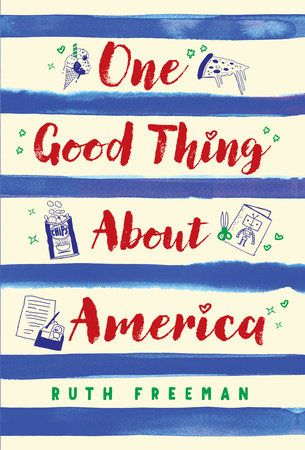Brand-New to America and Learning, One Book at a Time
by Ruth Freeman
When I ask my 9- to 11-year-old students if they brought any books with them to America, several of them just stare back at me. Like I don’t get it.
“I bring nothing,” they tell me gravely.
“What about toys? A stuffed animal?”
“I bring nothing!”
When everything they needed to bring had to fit into a backpack or suitcase, there was no room for books, toys, or (for the few that had them) iPads or PlayStations — they gave it all away.
English language learners (ELL) who are newcomers to my K-5 elementary school arrive with no books and few words of English, if any. Looking lost and overwhelmed, they start by reading easy picture books, playing simple games, and singing the alphabet song. Then we pull out our tried and true books. You can’t beat Brown Bear, Brown Bear, What Do You See?, written by Bill Martin, Jr. and illustrated by Eric Carle, for its simple and comforting repetitive text. Our worn copy is in both English and Arabic, which allows Iraqi students to see writing they recognize.
Then there are books like Chris Raschka’s Yo! Yes? and David Shannon’s No, David!, stories with few words but lots of universal appeal and humor. There is nothing better than seeing new students react to a story and burst out laughing.
Speaking of universal appeal and humor, we cannot leave out Mo Willems. When our fourth graders have to read to their “bookbuddies” in second grade, they reach for Elephant & Piggie books. I listened in the other day as a fourth grade ELL student read the easy text to her buddy, gradually ramping it up until one student was reading Elephant’s lines and the other was reading Piggie’s. Popular books like these also add pieces to my students’ cultural memory banks. Everyone knows Elephant & Piggie, and now my students do, too.
Is it ever easy being new? No, I don’t think so. However, there are lovely books that show characters learning to weave their old and new cultures together, including I’m New Here by Anne Sibley O’Brien, Joseph’s Big Ride by Terry Farish, and one of my favorites, My Two Blankets, written by Irena Kobald and illustrated by Freya Blackwood. There are novels, as well, such as Paul Fleischman’s Seedfolks, a story of people from different backgrounds coming together around a community garden. In each of these books, as readers come to know the characters, their empathy and compassion cannot help but grow.
My story One Good Thing About America is also about being new. It’s a middle grade novel, which means my newest students won’t be able to read it just yet, but I wrote it for them and because of them. I wanted them to see themselves … in a book! I also wanted other readers to glimpse what life is like when you are brand-new to America: how confusing, disorienting, and hard it is. Anaïs, the 9-year-old protagonist of the story, is faced with teachers who talk too fast, classmates who can’t say her name, and chicken fingers on the lunch menu! Slowly, she starts finding one good thing at a time about her new home until, at the end, her friends and teachers tell her SHE is one good thing about America.
My ELL students might not come to this country with books, but they quickly amass as many as they can handle. I recently read with a third grader who arrived from the Democratic Republic of Congo seven months ago, speaking French and only a few words in English. Each student in her class has their own book box with books from the classroom and the school library. Her book box is now stuffed with picture books, easy readers, novels, graphic novels, and nonfiction books about landforms, body parts, and American history. At home, she makes her mother and brother read the harder books to her.
She begins by reading easy readers to me and then it’s my turn, she says, to read to her. She pulls out a novel with a bookmark already halfway in. I read about a superhero princess using her power to overcome monsters and magic spells. Whether my student understands all the words is doubtful, but she sits enthralled, soaking up the sounds and rhythms of English. She is bounding full-speed ahead into this new language and, like the brave heroine in the story, she will struggle and fail and absolutely win in the end.

